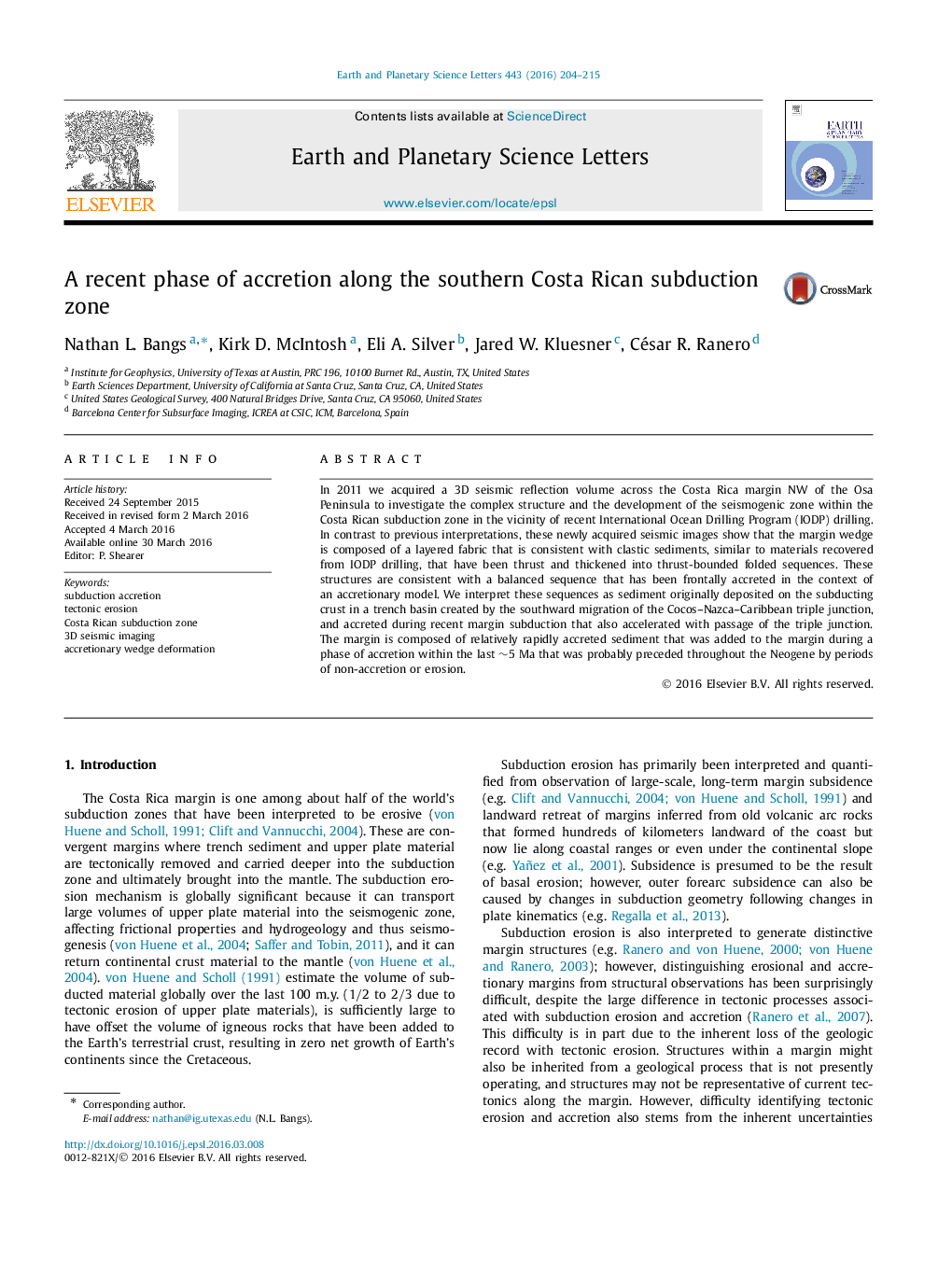| Article ID | Journal | Published Year | Pages | File Type |
|---|---|---|---|---|
| 6427448 | Earth and Planetary Science Letters | 2016 | 12 Pages |
â¢The Costa Rica margin, NW of Osa, appears to be composed of clastic sediments.â¢Few structures within the Costa Rica margin are consistent with tectonic erosion.â¢The margin wedge is composed of fault-propagation folds with no deep normal faults.â¢The margin wedge has regularly been shortening over the past 2.0-4.5 m.y.
In 2011 we acquired a 3D seismic reflection volume across the Costa Rica margin NW of the Osa Peninsula to investigate the complex structure and the development of the seismogenic zone within the Costa Rican subduction zone in the vicinity of recent International Ocean Drilling Program (IODP) drilling. In contrast to previous interpretations, these newly acquired seismic images show that the margin wedge is composed of a layered fabric that is consistent with clastic sediments, similar to materials recovered from IODP drilling, that have been thrust and thickened into thrust-bounded folded sequences. These structures are consistent with a balanced sequence that has been frontally accreted in the context of an accretionary model. We interpret these sequences as sediment originally deposited on the subducting crust in a trench basin created by the southward migration of the Cocos-Nazca-Caribbean triple junction, and accreted during recent margin subduction that also accelerated with passage of the triple junction. The margin is composed of relatively rapidly accreted sediment that was added to the margin during a phase of accretion within the last â¼5 Ma that was probably preceded throughout the Neogene by periods of non-accretion or erosion.
